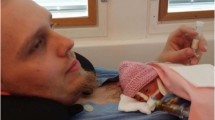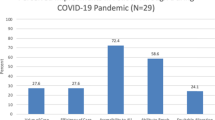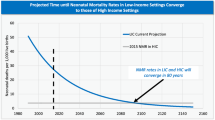Abstract
This paper summarizes lessons learned from formative research conducted in Bangladesh, Ghana, India, Mali and Nepal to inform the development of newborn health interventions, mostly in the context of field trials. Current practices, constraints to the adoption of optimal practices and implications for implementing inventions to improve newborn survival are discussed for: optimal care during pregnancy; skilled care at birth; optimal delivery and newborn care practices; special care of low birth weight babies; and timely and appropriate care seeking for newborn illness. General lessons concerning target audiences and intervention strategy are also drawn. In brief, interventions to reduce neonatal mortality need to start during pregnancy not only to promote birth preparedness and institutional delivery, but also to start the process of change concerning early newborn care practices. Their target audience should not only be pregnant or recently delivered women, but also include the main gatekeepers, particularly traditional birth attendants, grandmothers and other family members. Health providers' opinions also matter as care practices are less likely to change if families receive conflicting messages from different sources. Interventions are more likely to succeed if they are not simply message based, but include problem solving approaches, and a behavior change component to address community norms. Although antenatal care (ANC) is theoretically a good channel for newborn interventions, capitalising on its potential is not straightforward, and will require considerable investment and intervention development in its own right in order to improve ANC counselling, which will need to extend beyond training and tackle the many working day constraints encountered by ANC providers. Removing or subsidising the cost of deliveries may be a necessary action to increase institutional deliveries, but it is unlikely to be sufficient; measures will need to be put in place to ensure the basic quality of institutional deliveries and newborn care, and to change staff attitudes and practices. Post-natal visits should include observation of the baby, referral and counselling of the mother concerning danger signs in addition to promoting optimal care practices. The lessons learned should guide the development of interventions in other contexts, and ensure that key essential elements are not overlooked. They do not, however, mean that formative research will not be needed in other contexts, although the list of questions to address should be considerably reduced; successful intervention strategies require adaptation to make them local, context-specific if they are to be effective, and ongoing process monitoring to ensure the quality of intervention delivery, to check that it is having its intended effect, and to respond to any concerns from its implementers, recipients or the community. Finally, major gaps in evidence are highlighted. These include: establishing levels of recognition of asphyxiated babies and effectiveness of local solutions for resuscitation; clarifying the extent of the overlap between community perceptions of ‘at risk’ babies and low birthweight babies; developing and evaluating effective interventions to enable ANC services to deliver effective behaviour change counselling for pregnant and newborn health; evaluating effectiveness of delivering community-based newborn interventions at scale through routine services.
This is a preview of subscription content, access via your institution
Access options
Subscribe to this journal
Receive 12 print issues and online access
$259.00 per year
only $21.58 per issue
Buy this article
- Purchase on Springer Link
- Instant access to full article PDF
Prices may be subject to local taxes which are calculated during checkout
Similar content being viewed by others
References
Lawn J, Cousens S, Zupan J . 4 million neonatal deaths: when? where? why? Lancet 2005; 365: 891–900.
Lawn J, Shibuya K, Stein G . No cry at birth: global estimates of intrapartum stillbirths and intra-partum related neonatal deaths. Bull WHO 2005; 43: 409–417.
Black RE, Morris SS, Bryce J . Where and why are 10 million children dying every year? Lancet 2003; 361: 2226–2234.
Darmstadt GL, Bhutta ZA, Cousens S, Adam T, Walker N, de Bernis L, for the Lancet Neonatal Survival Steering Team. Evidence-based, cost-effective interventions: how many newborn babies can we save? Lancet 2005; 365: 977–988.
Guidelines for formative research for interventions to improve care of newborns. Draft available on request from martinesj@who.int.
Final Evaluation Report of the ‘Saving Newborn Lives’ Mali Program of Save the Children, February, 2005.
Alam MA, Ali NA, Sultana N, Mullany L, Teela KC, Zaman Khan NU et al. Newborn umbilical cord and skin care in Sylhet District, Bangladesh: implications for promotion of umbilical cord cleansing with topical chlorhexidine. J Perinatol 2008; 28 (Suppl 2): S61–S68.
Iyengar SD, Iyengar K, Martines JC, Dashora K, Deora KK . Childbirth practices in rural Rajasthan, India: implications for neonatal health and survival. J Perinatol 2008; 28 (Suppl 2): S23–S30.
Darmstadt GL, Kumar V, Yadav R, Shearer JC, Baqui AH, Awasthi S, et al., and the Saksham Study Group. Community perceptions of birth weight in rural Uttar Pradesh, India: implications for care of low-birth-weight infants. J Perinatol 2008; 28 (Suppl 2): S53–S60.
Bazzano AN . Reducing neonatal mortality in rural Ghana: understanding current newborn care practices and their cultural context. PhD thesis, Faculty of Medicine, University of London, London, UK, 2006.
Morrison J, Osrin D, Shrestha B, Tumbahangphe KM, Tamang S, Shrestha D et al. How did formative research inform the development of a women's group intervention in rural Nepal? J Perinatol 2008; 28 (Suppl 2): S14–S22.
Hill Z, Manu A, Tawiah-Agyemang C, Gyan T, Turner K, Weobong B et al. How did formative research inform the development of a home-based neonatal care intervention in rural Ghana?. J Perinatol 2008; 28 (Suppl 2): S38–S45.
Tawiah-Agyemang C, Kirkwood BR, Edmond K, Bazzano A, Hill Z . Early initiation of breast-feeding in Ghana: barriers and facilitators. J Perinatol 2008; 28 (Suppl 2): S46–S52.
Mohan P, Iyengar SD, Agarwal K, Martines JC, Sen K . Care-seeking practices in rural Rajasthan: barriers and facilitating factors. J Perinatol 2008; 28 (Suppl 2): S31–S37.
Koblinsky MA, Campbell OMR, Harlow SD . Mother and More: A Broader Perspective on Women's Health In: Koblinsky M, Timyan J and Gay J (eds). The Health of Women: A Global Perspective. Westview Press: Boulder, CO, 1993: ISBN: 0813316 081.
Edmond KM, Zandoh C, Quigley MA, Amenga-Etego S, Owusu-Agyei S, Kirkwood BR . Delayed breastfeeding initiation increases risk of neonatal mortality. Pediatrics 2006; 117: 380–386.
Hill Z, Kendall C, Arthur A, Kirkwood B, Adjei A . Recognizing childhood illnesses and their traditional explanations: exploring options for care-seeking interventions in the context of the IMCI strategy in rural Ghana. Trop Med Int Health 2003; 8: 668–676.
Author information
Consortia
Rights and permissions
About this article
Cite this article
Neonatal Mortality Formative Research Working Group. Developing community-based intervention strategies to save newborn lives: lessons learned from formative research in five countries. J Perinatol 28 (Suppl 2), S2–S8 (2008). https://doi.org/10.1038/jp.2008.166
Published:
Issue Date:
DOI: https://doi.org/10.1038/jp.2008.166
This article is cited by
-
What impact do essential newborn care practices have on neonatal mortality in low and lower-middle income countries? Evidence from Bangladesh
Journal of Perinatology (2016)
-
“Why not bathe the baby today?”: A qualitative study of thermal care beliefs and practices in four African sites
BMC Pediatrics (2015)
-
Use of Job Aids to Improve Facility-Based Postnatal Counseling and Care in Rural Benin
Maternal and Child Health Journal (2015)
-
Local understandings of care during delivery and postnatal period to inform home based package of newborn care interventions in rural Ethiopia: a qualitative study
BMC International Health and Human Rights (2014)
-
Thermal care for newborn babies in rural southern Tanzania: a mixed-method study of barriers, facilitators and potential for behaviour change
BMC Pregnancy and Childbirth (2014)



